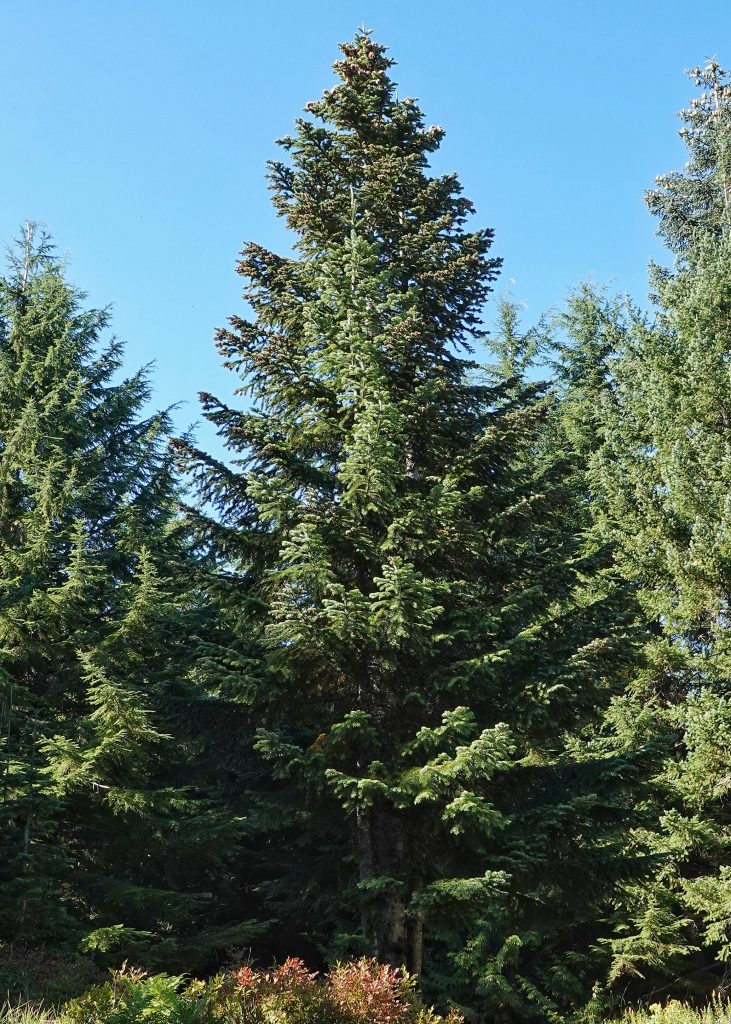
Now we’re on to Abies amabilis, the other true fir in our region that has stomatal bloom only on the underside of the needle. To recap- the true firs (genus Abies) can be distinguished from other conifers with singular needles by the fact that they have upright cones that disintegrate on the tree, and the scars left by shed needles are oval to round, and slightly indented. Once you’ve determined it is a fir you can rule out Abies procera, A. lasiocarpa and hybrids of A. concolor and A. magnifica (apparently there are no pure A. concolor or A. magnifica in our region) if the top of the needle lacks stomatal bloom.
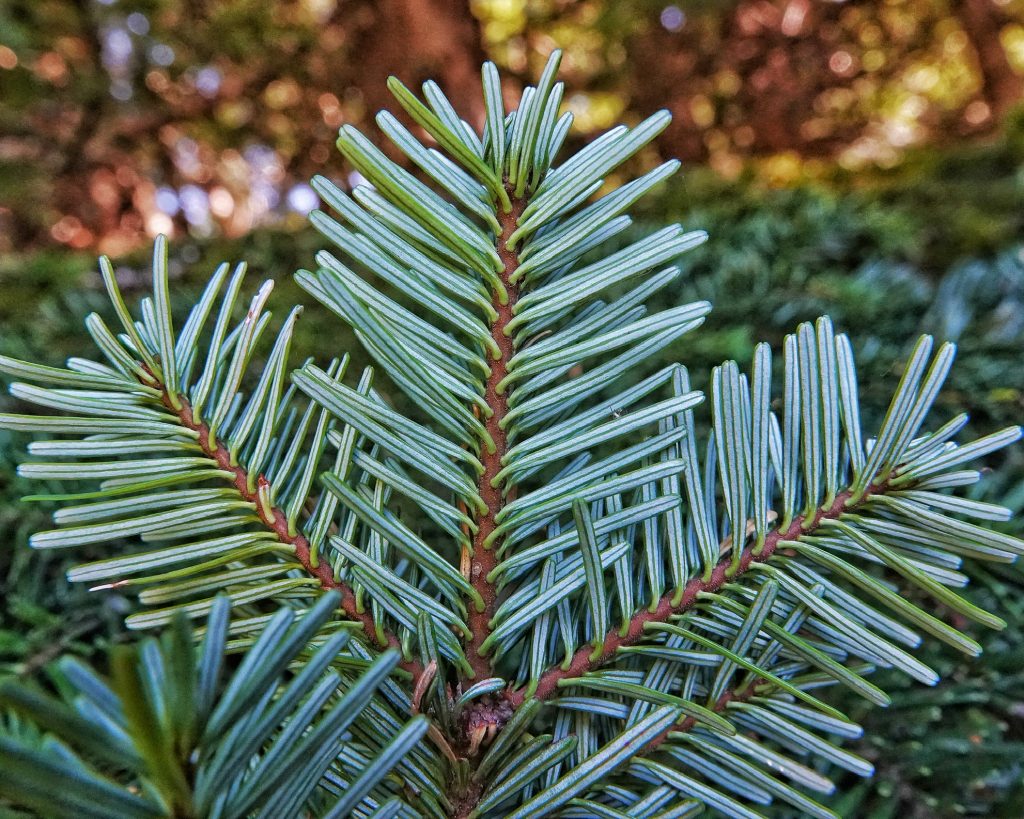
What you’re left with are Abies amabilis (silver fir) and A. grandis (grand fir), and they both have needles that are 20-40mm long, with a notched tip, and a groove in the center of the dorsal surface. However, silver fir needles are more or less of one size, don’t get longer than 40mm, and are a somewhat matte yellow to slightly bluish green, while the needles of grand fir are distinctly of two sizes, may be up to 50mm long, and are a shiny green to dark green. One can also note that the needles of A. amabilis point upward and forward, and are crowded on the twig, obscuring it from view when looked at from above, while those of A. grandis tend to be spreading, presenting a relatively flat profile, and are more sparsely arrayed on the twig, and do not hide it. If you have binoculars or are very close you can also see that silver fir have barrel shaped cones that are mostly purple and up to 6” long, whereas grand fir cones are cylindrical, greenish purple, and usually less than 4” long.
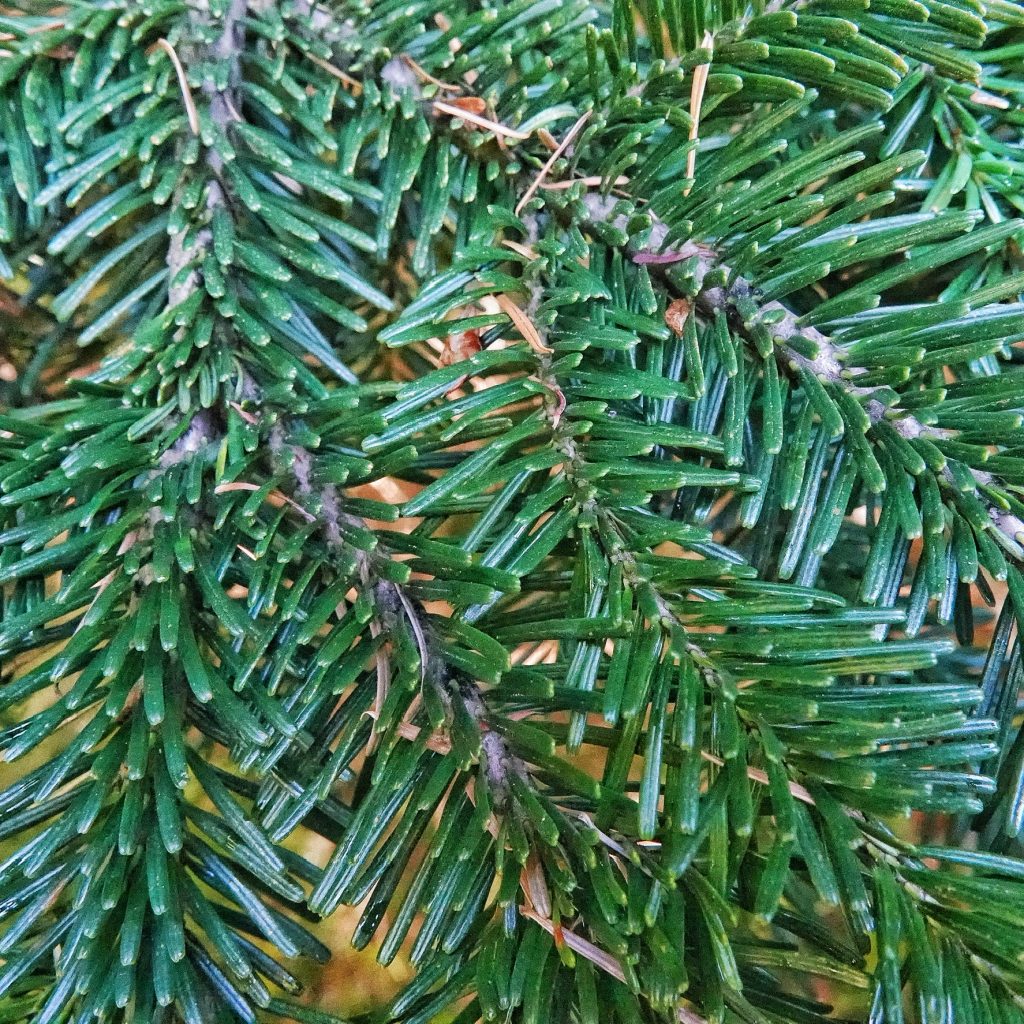
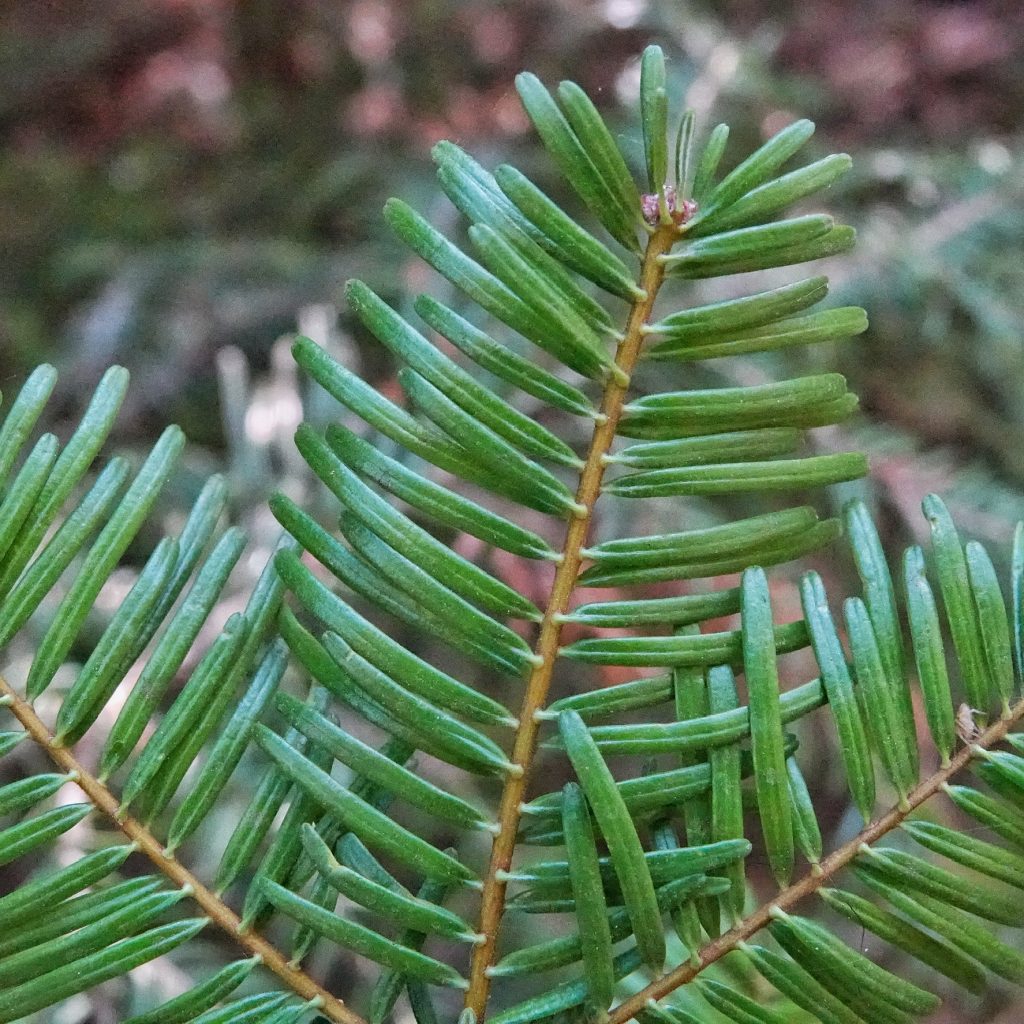
Because of its thin bark and shallow roots, it has low tolerance for fire. Those shallow roots (since they do not spread wide) also make it susceptible to being uprooted by high winds. It is one of the most shade tolerant of the conifers, but responds well to any canopy opening, and though it grows slowly in its early years it often exceeds the growth of western hemlock after a hundred years or so. For a more complete account of the natural history of this tree, see the exhaustive treatment by Crawford/Oliver on the Forest Service site (which seems to be the same as the one they did for the book “Silvics of North America:volume 1; Conifers”; (Burns) .
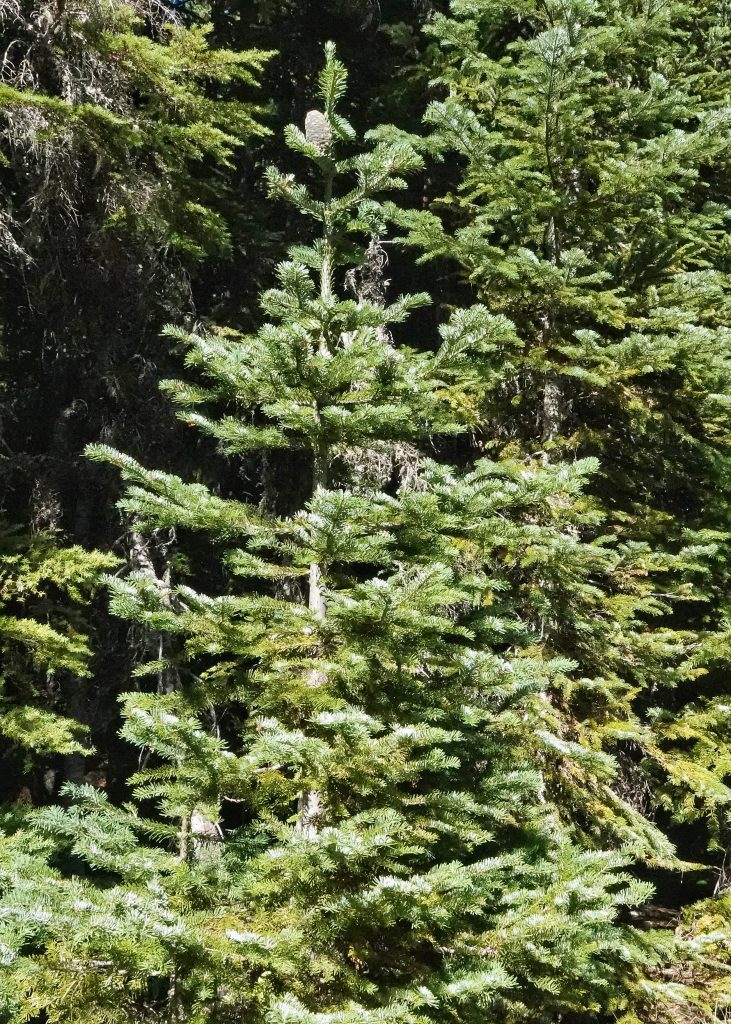
This species is harvested commercially and marketed as hem-fir. It is used as dimensional lumber, in plywood production, and for pulp. Indigenous peoples had many of the same uses for this tree that they did for grand firs, but they did use the inner bark (cambium) of this tree as a food source, something I did not find evidence for with grand firs. I also saw that they used large branches as ‘bush sleighs’ to transport cargo over deep snow. In addition they used the pitch in various ways to treat eye problems and sore throats, and chewed it as gum. Bark, roots and twigs were used for stomach ailments and tuberculosis, and a decoction of needles was used to treat colds. For a more complete list see the 27 entries on the Native American Ethnobotany Database.
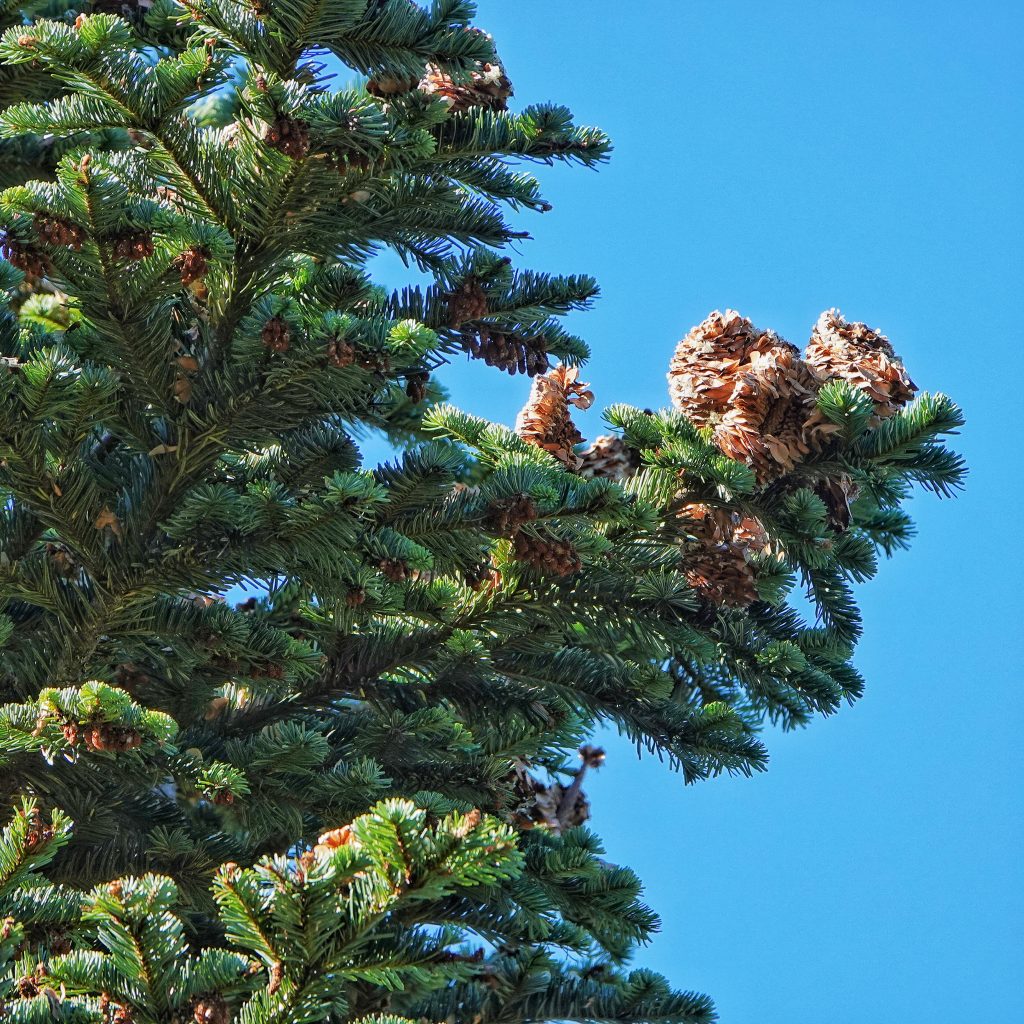
Description-Large (up to 225’ tall and 40” dbh) conifer with grayish white bark that may be furrowed with age, purple to brownish purple cones, and crowded needles that point upward and forward; cones have bracts shorter than scales; needles yellow green to slightly bluish green, with no stomatal bloom on the upper surface, which has a central groove and a notched tip.
Similar species-For Abies grandis, see above; A. lasiocarpa and A. procera have stomatal bloom on both sides of needle; leaf scars of Pseudotsuga menziesii, Tsuga heterophyla, and T. mertensiana have pendent cones, and slightly raised leaf scars; Spruces have persistent, peg like, leaf bases.
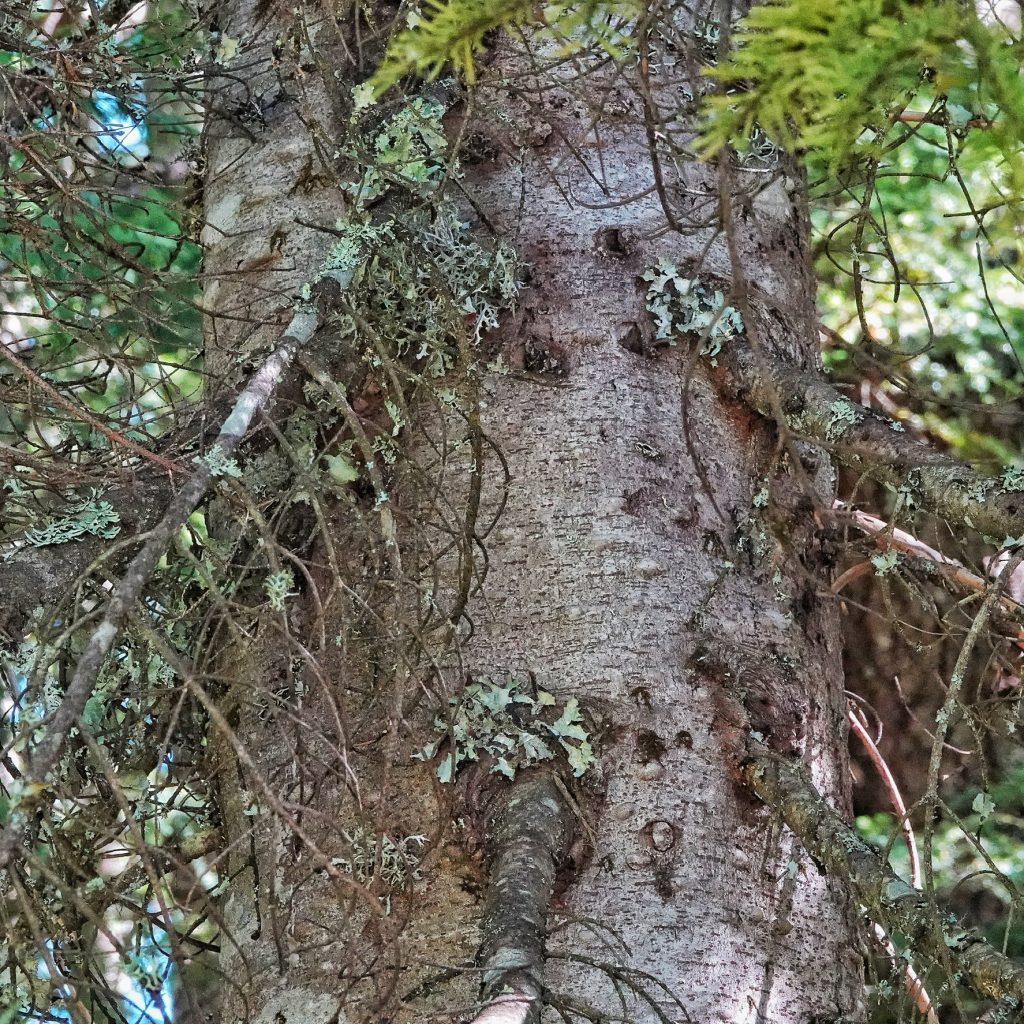
Habitat-Montane conifer forests from 1,000’ to subalpine.
Range-Northwestern North America; found in our region in the Cascades, Olympics, and sporadically at higher elevations in the n Coast Range; seemingly absent or very rare in the Siskiyous and east of the Cascades.
Reproductive timing-Cones form during summer of one year and are pollinated the following spring, although the pollen doesn’t fertilize the cone for 5-6 weeks; seeds are mature by mid August, and cones begin to disintegrate in mid September.
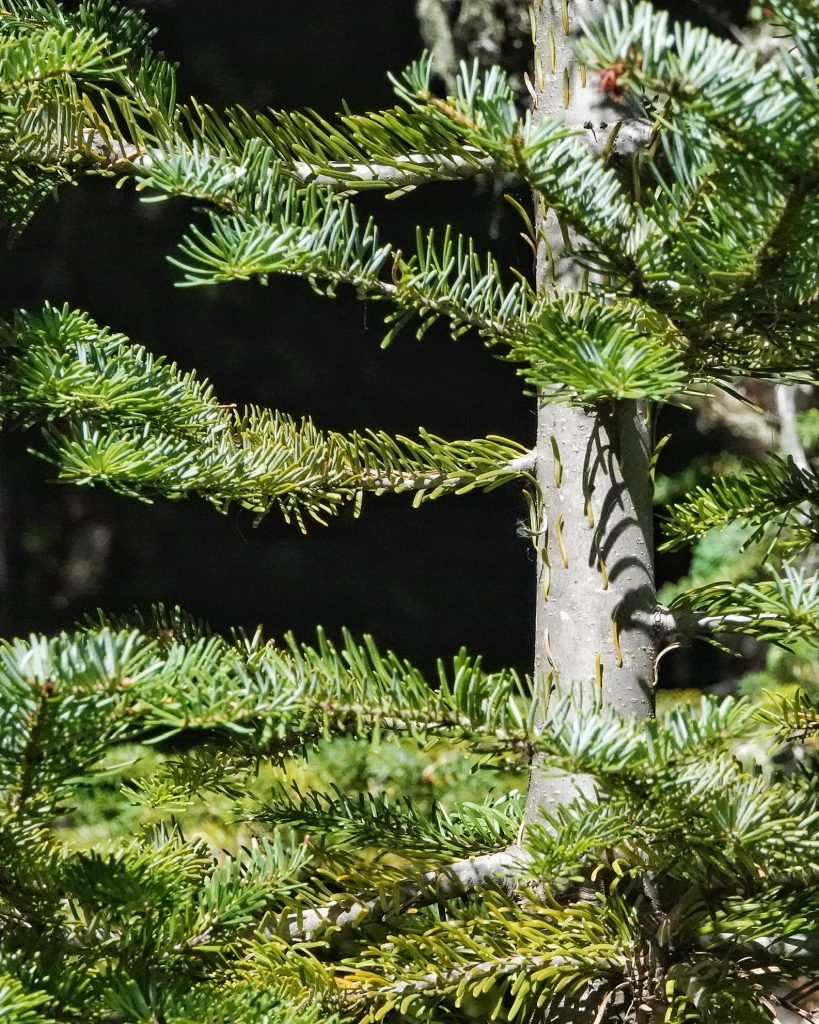
Eaten by-Elk browse the foliage, bears strip the bark of young trees, grouse and small mammals eat the buds, and squirrels and chipmunks seed on the seeds; larval host for the leaf mining moths Archips packardiana, Epinotia tsugana, Choristoneura orae, C. occidentalis, and Dioryctria reniculelloides, as well as the moths Acleris gloverana, Lophocampa argentata, Cosmia praeacuta, Mniotype tenera, Panthea virginarius, Phlogophora periculosa, Spiramater lutra, Syngrapha alias, S. celsa, Xestia mustelina, Barbara colfaxiana, Epinotia radicana, Epiphyas postvittana, Lophocampa argentata, Antepirrhoe fasciata, Caripeta divisata, Cladara limitaria, Enypia packardata, E venata, Epirrita autumnata, Gabriola dyari, Cladara limitaria, Pero behrensaria, P. morrisonaria, Speranza lorquinaria, Tetracis pallulata, Thallophaga hyperborea, Melanolophia imitata, Lambdina fiscellaria, Neoalcis californiaria plus many more; cones are larval host for the chalcid wasps Megastigmus lasiocarpae and M. pinus, and the lance fly Earomyia abietum; the introduced true bug Adelges picea is a serious threat to the whole tree; stressed or dead trees are a larval host for wood wasps in the genus Sirex, including S. varipes, and the bark beetles Pseudohylesinus sericeus, P. grandis, and P. granulatus; unfortunately I can find no information on cerambycids or buprestids that utilize this tree.
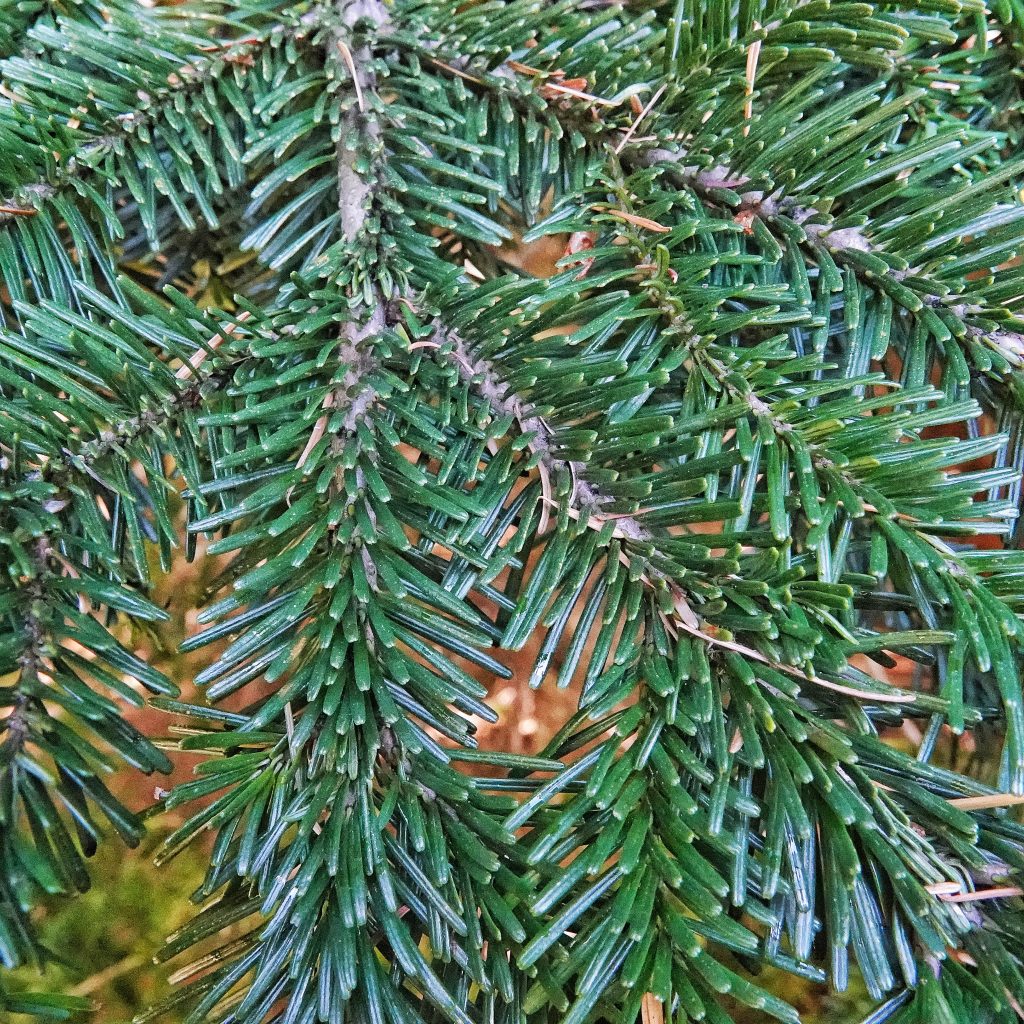
Etymology of names–Abies is the Latin word for ‘firs’. The specific epithet amabilis is from the Latin word for ‘lovely’, and I’m sure everyone would agree with David Douglas on the applicability of this label.
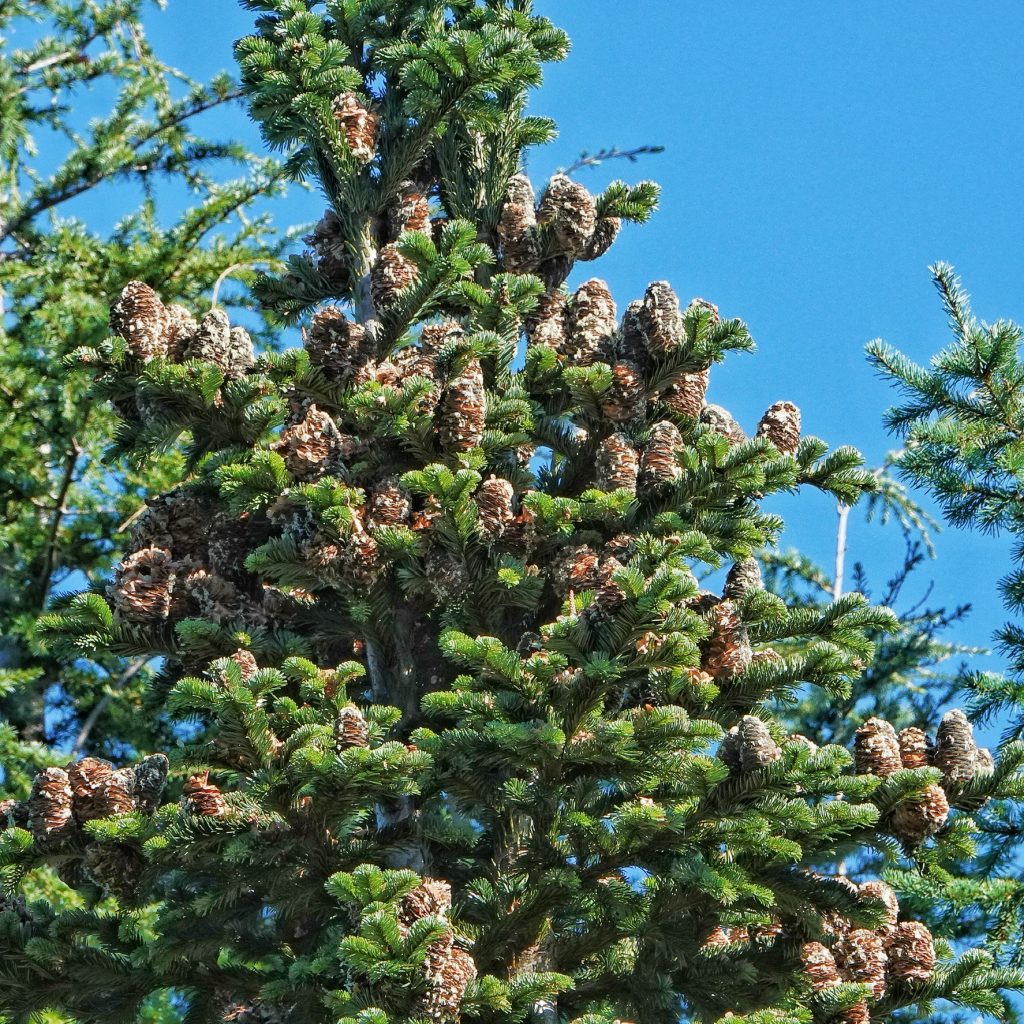
Abies amabilis (Pacific silver fir) description
BRIT – Native American Ethnobotany Database
Pacific Silver Fir, Abies amabilis | Native Plants PNW
https://books.google.com/books/about/Silvics_of_North_America_Conifers.html?id=uNygEIp5Bm0C
Burke Herbarium Image Collection
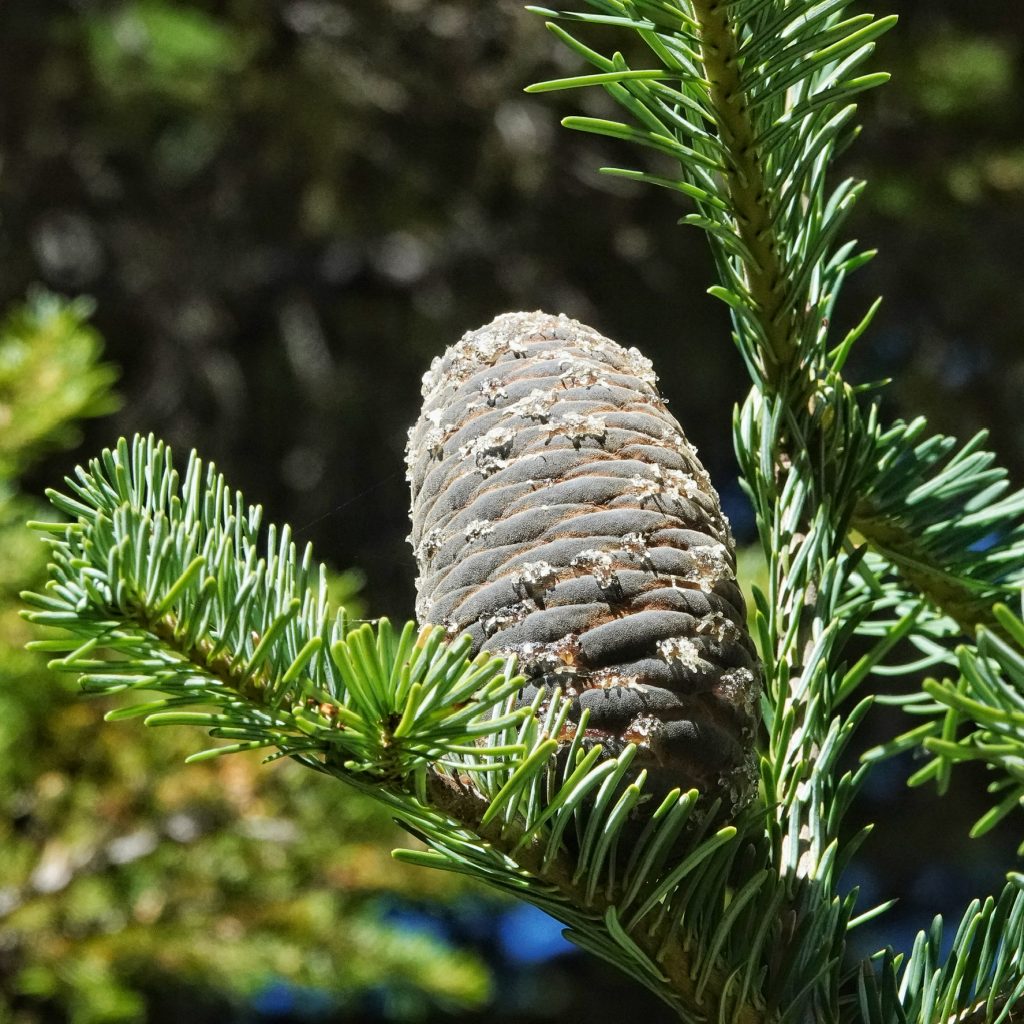
I was told as a kid that the two white lines meant it was grand fir. I’ve repeated that “knowledge” to everyone I’ve been in the woods with.
Thank you for setting this straight! I’m appalled I’ve been so wrong for so long, AND lead others astray.
Oh, I can’t begin to tell you how much bad information I was taught in my youth that I’m having to unlearn now! We’re all learning together here.